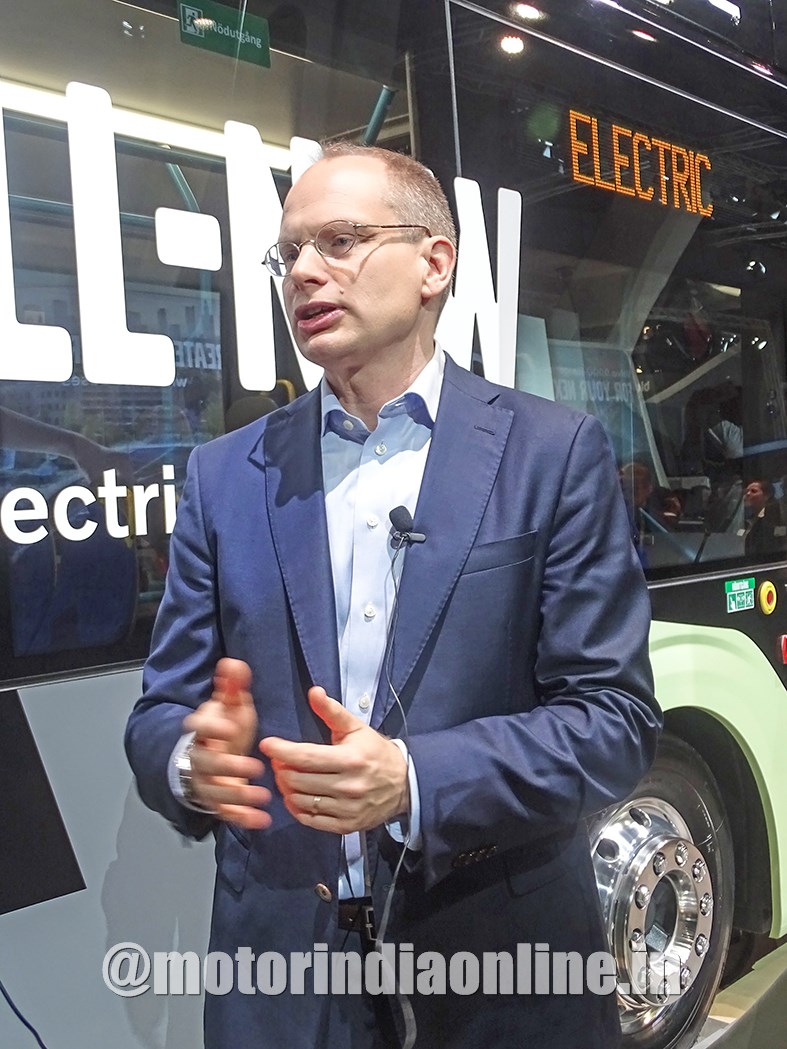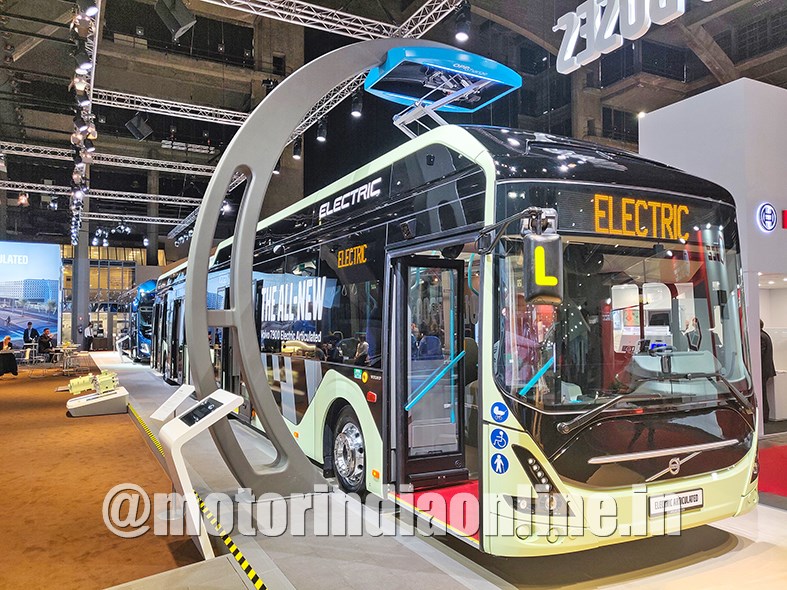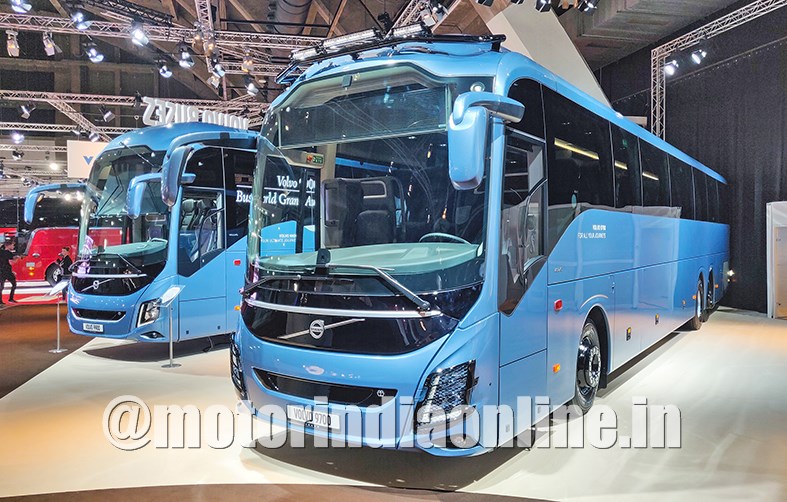The all-new battery-electric articulated, along with a new 15-metre Volvo 9700 long-distance coach variant and the upgraded full-hybrid city buses, were the foremost attractions from the Swedish bus maker at this year’s Busworld.

“Create Your Zero City”. That’s indeed the over-riding theme for Volvo Buses at 2019 Busworld Europe, focusing on how the manufacturer can help cities transition towards sustainable public transport solutions. A key to this pursuit is a complete range of electrified city buses, which now includes low-floor articulated buses as well aimed at high-capacity operations for global cities.
Announced earlier at UITP Global Transport Summit in June, the new Volvo 7900 electric articulated received its first public debut at the international bus show. With a passenger capacity of up to 150, the all-electric articulated bus is available in two lengths – 18 and 18.7 m. The number of batteries (up to 396 kWh storage capacity) can be varied to provide the exact energy storage capacity needed for each vehicle. Charging can take place either via quick-charge stations along the route (OppCharge) or via the main grid when the bus is parked in the depot (Combo2/CCS).
“With Volvo 7900 Electric Articulated, we are creating new opportunities for cities that want to develop sustainable public transport using energy-efficient, quiet and exhaust emission-free buses. In order to make it as simple as possible for our customers to take the step into an electrified future, the bus is available as a turnkey solution at a fixed, predetermined cost per kilometre. We ensure that the operator always has a bus ready for the road, without the need to purchase it. Servicing, repairs, battery maintenance and driver training are all included,” explained Håkan Agnevall, President of Volvo Buses, at the launch event.
From the performance viewpoint, the battery-electric articulated has been developed to provide first-class driveability even on demanding uphill gradients and it can handle a fully loaded start on a 20 degree uphill slope, claims the bus maker. The driveline includes dual electric motors with a two-speed transmission, offering a maximum power output of 2×200 kW and 31 kNm peak torque at the driven axle. The bus also offers 80 per cent lower energy consumption than a corresponding diesel bus, it adds.
Design wise, the the bus features four double doors, large uncluttered floor areas and ergonomically designed handrails and grab-handles, and comfortable seats. Other tech features on offer includes Volvo Dynamic Steering, Safety Zone Management to prevent the driver from breaching speed limits, and Pedestrian and Cyclist Detection System to alerts the driver at the risk of collision.
Further, Volvo Buses took the opportunity to introduce a new 15-metre variant of the popular intercity coach Volvo 9700. It can seat up to 65 passengers, along with new seat layouts and additional flexibility in varying the allocation of space between passengers and luggage compartments. “We are supplementing our range of long-distance coaches in the premium class with yet another product that has a strong demand on many markets. Thanks to greater transport capacity and more flexibility, our customers get new opportunities to meet their passengers’ high expectations while at the same time enhancing their own productivity,” noted Håkan Agnevall.
The 9700 is powered by an 11-litre Euro 6 engine (460 hp) that can also run on biodiesel. It can be equipped with Volvo Dynamic Steering and Safety Zone feature, to control the vehicle’s speed within selected areas. “Safety Zone is one of many features now easily available to the operator, and via the Volvo Connect App we make it easier for our customers to always maintain full control over their buses. This contributes to increased safety, higher availability and better transport economy,” noted Håkan Agnevall.
The next big announcement was on the Volvo full-hybrid buses, which can now drive in emission-free mode at higher speeds and longer distances than before. Electric propulsion can be used at speeds of up to 50 kmph, as against previous 20 kmph. Depending on the climate and the topography, the bus can run on electricity for up to one km at a time. The upgrade, which also includes Volvo Zone Management system, encompasses both Volvo’s new and existing Euro 6 hybrid buses.

